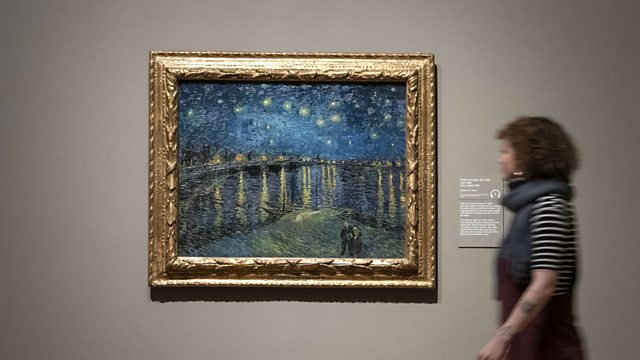Vincent Van Gogh and William Morris: Art from the People, for the People
Posted by Pete on 29th Jul 2019
129 years today since his untimely death, appreciating Vincent Van Gogh's radical political philosophy — one which treasured the masses above the masters. It was philosophy not dissimilar to another radical hero of ours: British designer William Morris.
Some of the designs we most enjoy making at Radical Tea Towel are those to do with William Morris, the 19th century British textile-maker.
Morris, a socialist, believed in art tailored to the people as a whole, not just the powerful.
I was overjoyed, then, to discover that my favourite artist, Vincent Van Gogh,
shared Morris’ democratic and socialistic philosophy of art.

Van Gogh's paintings for the people
It was a few weeks ago and I’d bagged a ticket to the Van Gogh exhibit at Tate Britain.
Now, I won’t claim to be a massive art fan, but Vincent Van Gogh’s an exception.
Even today, his paintings are still alive with the original 19th century brushstrokes. They’re like nothing I’ve ever seen.
So getting to see the iconic Starry Night Over the Rhone in person, along with countless other Van Gogh masterpieces, was more than enough to make it a great day.
But it got even better than that.
As it turns out, Van Gogh understood art in a very similar way to William Morris and his comrades. He made it quite clear:
“I want to make figures from the people for the people.”
The British influence
What’s more, Van Gogh picked up this popular concept of art, in large part, from Britain.
Van Gogh lived in and near London for most of 1873-1876.
He was a big fan of British writers like Charles Dickens and George Eliot, largely for their positive portrayals of working people in books like Hard Times and Silas Marner.
British art, unsurprisingly, also left its mark on the Dutch painter.
He enjoyed The Graphic, an illustrated newspaper whose artwork focused on the marginalised and oppressed of 19th century England’s increasingly unequal society.
And while Dickens and The Graphic were doing so in culture, others in Britain were beginning to promote the cause of ordinary people in politics.
When Van Gogh was in England, Karl Marx was there too, working on the second volume of Das Kapital.
Meanwhile, trade union activity was on the rise across the country.

Van Gogh: a genius appreciated in our time
Though more known for its conservative norms, Victorian-era Britain was also alive with politicians, theorists, writers, and artists: all busy celebrating and fighting for the working class.
Inevitably, this atmosphere would also leave its mark on the young Van Gogh, and flourish through his art (as it did for Morris).
While his sunflowers and self-portraits are better-known, he poured his soul into countless paintings of people thrown down and cast out by a heartless industrial society.
Many of the well-to-do elite may have viewed them with pity, scorn, and prejudice, but Van Gogh brought prisoners, seamstresses and prostitutes to life in his work with touching sympathy and respect.
His was an art which, like no other, could find the exceptional beauty in ordinary human beings.
At a time when politics is overrun by the super rich and their sycophants, it seems like a good moment for us to revisit the real genius of Vincent Van Gogh.
